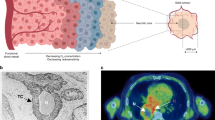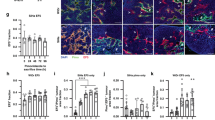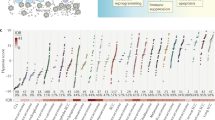Abstract
Four human melanoma xenograft lines (A-07, D-12, R-18, U-25) grown orthotopically in Balb/c nu/nu mice were characterized with respect to the fraction of radiobiologically hypoxic cells. The purpose of the study was to establish a firm radiobiological basis for future use of the lines in the development and evaluation of non-invasive assays of tumour hypoxia. The hypoxic fractions were assessed using three different assays, the single cell survival assay, the tumour growth delay assay and the local tumour control assay, and the means +/- s.e. were found to be 6 +/- 3%, 3 +/- 1% and 5 +/- 2% respectively (A-07), 26 +/- 5%, 25 +/- 6% and 22 +/- 6% respectively (D-12), 55 +/- 9%, 65 +/- 8% and 48 +/- 7% respectively (R-18) and 52 +/- 8%, 59 +/- 7% and 47 +/- 7% respectively (U-25). The three assays gave numerical values for the hypoxic fraction that were not significantly different for any of the lines. The hypoxic fraction differed significantly among the lines; the R-18 and U-25 lines showed higher hypoxic fractions than the D-12 line (P < 0.05), which in turn showed a higher hypoxic fraction than the A-07 line (P < 0.05), regardless of the assay. The wide range of the hypoxic fractions and the significant differences among the lines suggest that A-07, D-12. R-18 and U-25 tumours should be useful models in future studies attempting to develop non-invasive assays of tumour hypoxia.
This is a preview of subscription content, access via your institution
Access options
Subscribe to this journal
Receive 24 print issues and online access
$259.00 per year
only $10.79 per issue
Buy this article
- Purchase on Springer Link
- Instant access to full article PDF
Prices may be subject to local taxes which are calculated during checkout
Similar content being viewed by others
Author information
Authors and Affiliations
Rights and permissions
About this article
Cite this article
Rofstad, E., Måseide, K. Fraction of radiobiologically hypoxic cells in human melanoma xenografts measured by using single-cell survival, tumour growth delay and local tumour control as end points. Br J Cancer 78, 893–898 (1998). https://doi.org/10.1038/bjc.1998.598
Issue Date:
DOI: https://doi.org/10.1038/bjc.1998.598



